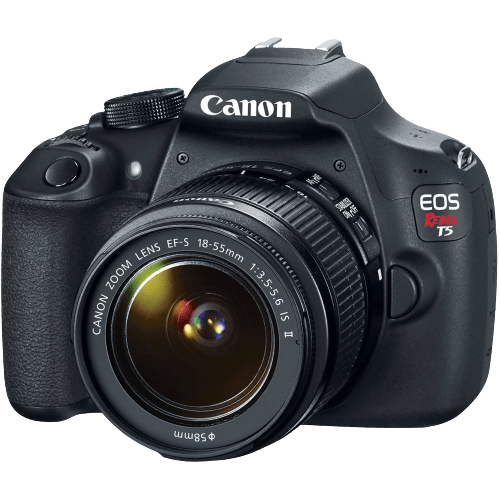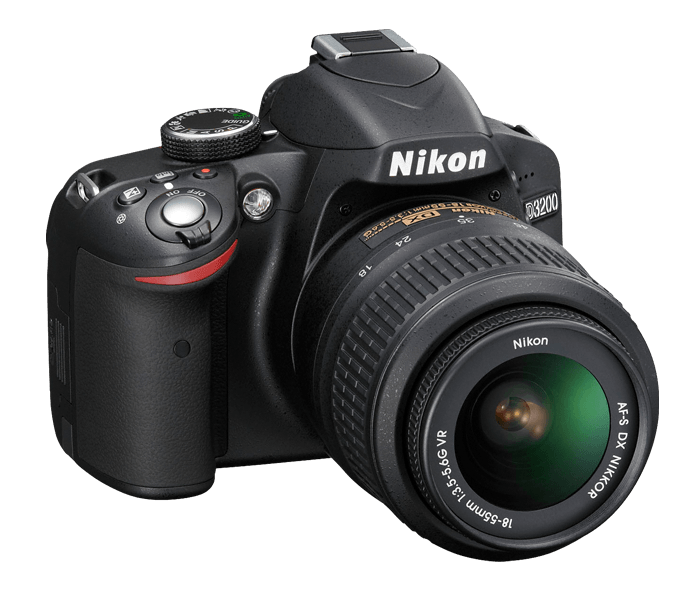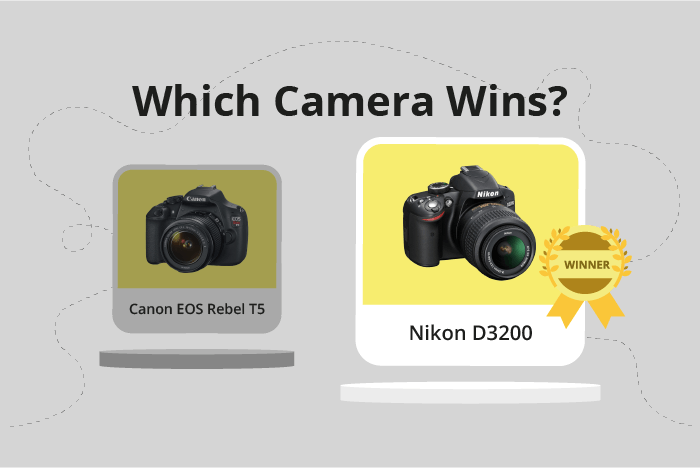Canon EOS Rebel T5 / 1200D vs Nikon D3200 Comparison
Canon EOS Rebel T5 / 1200D

Nikon D3200

The Nikon D3200 outperforms the Canon EOS Rebel T5 / 1200D with a score of 54/100 compared to 38/100. Both cameras are DSLR models, released in 2012 and 2014, respectively. They share similarities in size, with the Nikon D3200 measuring 125 x 96 x 77mm and the Canon T5 at 130 x 100 x 78mm. The Nikon D3200 is slightly heavier at 505g, while the Canon T5 weighs 480g.
The Nikon D3200’s higher score indicates its superior performance, which justifies its higher launch price of $699 compared to the Canon T5’s $500. However, the Canon T5’s lighter weight and slightly larger size may appeal to some users.
Considering the scores and specifications, the Nikon D3200 stands out as the better choice for those seeking higher performance. However, the Canon T5 remains a valid option for those prioritizing a lighter and more affordable camera.
Canon EOS Rebel T5 / 1200D vs Nikon D3200 Overview and Optics
The Nikon D3200 outperforms the Canon EOS Rebel T5 / 1200D in terms of optics, scoring 63/100 compared to the Canon’s 39/100. Both cameras share some common specifications, such as the CMOS sensor type, APS-C sensor size, and the lack of image stabilization. However, there are notable differences that contribute to the Nikon’s superior score.
The Nikon D3200 boasts a higher megapixel count at 24.2, compared to the Canon’s 18 megapixels. This allows for greater image resolution and detail. Additionally, the Nikon has a faster shooting speed of 4 frames per second, as opposed to the Canon’s 3 frames per second. This enables the Nikon to capture fast-moving subjects more effectively. The Nikon also features a more advanced processor, the Expeed 3, whereas the Canon uses the older Digic 4 processor. Furthermore, the Nikon has a higher DXOMARK score for its sensor, 81, while the Canon’s sensor scores 63. This indicates that the Nikon’s sensor performs better in terms of image quality and low-light sensitivity.
The Canon T5 / 1200D does have one advantage in terms of optics: its lens mount. The Canon EF-S mount offers compatibility with a wider variety of lenses, providing more flexibility for photographers. However, this single advantage does not outweigh the overall superior performance of the Nikon D3200.
Taking all these factors into account, the Nikon D3200 clearly offers better optical performance than the Canon EOS Rebel T5 / 1200D. With its higher megapixel count, faster shooting speed, more advanced processor, and better sensor performance, the Nikon D3200 is the better choice for photographers seeking superior optics in their camera.
Canon EOS Rebel T5 / 1200D vs Nikon D3200 Video Performance
The Canon EOS Rebel T5 / 1200D and the Nikon D3200 have the same video score of 43/100, indicating that both cameras have comparable video capabilities. As we examine the specifications, we can see that both cameras share some common features.
Both the Canon T5 and the Nikon D3200 offer Full HD video recording with a maximum resolution of 1920 x 1080 pixels. They also have an identical maximum video frame rate of 30fps. Additionally, neither camera has built-in time-lapse functionality.
Despite their equal scores, the Canon T5 has an advantage in its video autofocus system. The T5 uses a hybrid CMOS AF system, which provides faster and more accurate focus during video recording. This feature allows for smoother focus transitions and better overall video quality.
On the other hand, the Nikon D3200 has a slight edge in terms of video compression options. The D3200 offers both H.264 and MPEG-4 compression formats, providing more flexibility when it comes to video file sizes and quality. However, this advantage is minor and may not significantly impact the overall video performance of the camera.
Upon comparing the video capabilities of the Canon EOS Rebel T5 / 1200D and the Nikon D3200, it is evident that both cameras offer similar performance. The Canon T5’s hybrid CMOS AF system provides an advantage in autofocus performance, while the Nikon D3200’s additional compression options offer slightly more flexibility. Ultimately, the choice between these two cameras may come down to factors beyond their video capabilities, as their performance in this area is quite similar.
Canon EOS Rebel T5 / 1200D vs Nikon D3200 Features and Benefits
The Nikon D3200 outperforms the Canon EOS Rebel T5 / 1200D in terms of features, scoring 41/100 compared to the Canon’s 36/100. Both cameras share some specifications, such as a 3-inch screen size, no touchscreen, no GPS, no Wi-Fi, and no Bluetooth.
One key advantage of the Nikon D3200 is its screen resolution, which is 921,000 dots, significantly higher than the Canon T5’s 460,000 dots. This higher resolution offers a sharper, clearer image on the screen, making it easier to review photos and navigate the camera’s menu.
On the other hand, the Canon T5 has a flip screen, which the Nikon D3200 lacks. This feature allows users to shoot from various angles and positions more easily, making it more versatile for different shooting situations.
In terms of features, the Nikon D3200 is the better camera due to its higher screen resolution. This advantage provides better image review and menu navigation capabilities for users. However, the Canon T5’s flip screen is a notable feature that offers more shooting flexibility. Users should consider their specific needs and preferences when choosing between these two cameras.
Canon EOS Rebel T5 / 1200D vs Nikon D3200 Storage and Battery
The Canon EOS Rebel T5 / 1200D and the Nikon D3200 both score 27/100 in storage and battery, indicating no clear winner in this aspect. Both cameras have a single memory card slot and accept SD, SDHC, and SDXC memory cards. However, the Nikon D3200 is compatible with UHS-I cards, providing faster read and write speeds.
The Nikon D3200 has a slight advantage in battery life, offering 540 shots per charge compared to the Canon T5 / 1200D’s 500 shots. The Nikon uses the EN-EL14 battery, while the Canon uses the LP-E10 battery. Neither camera supports USB charging.
Despite the Nikon D3200’s marginally better battery life and UHS-I compatibility, both cameras have similar storage and battery performance. The choice between the two ultimately depends on the user’s preference and other factors such as optics, video, and features.
Alternatives to the Canon EOS Rebel T5 / 1200D and Nikon D3200
Are you still undecided about which camera is right for you? Have a look at these popular comparisons that feature the Canon EOS Rebel T5 / 1200D or the Nikon D3200:

